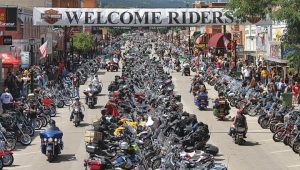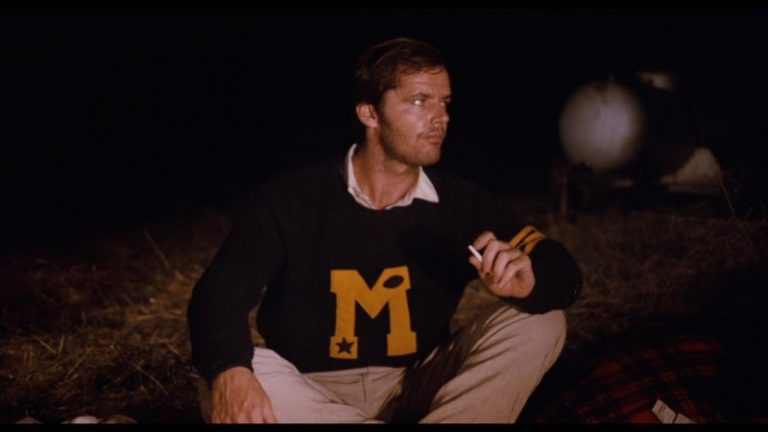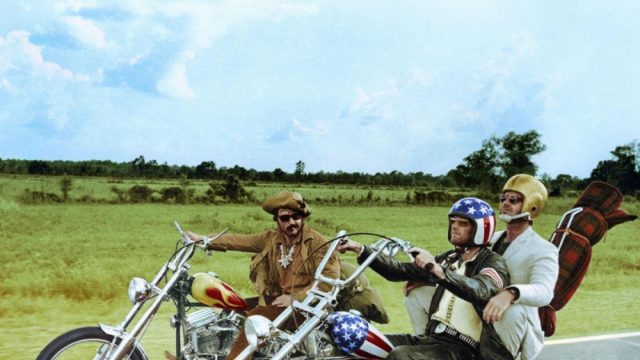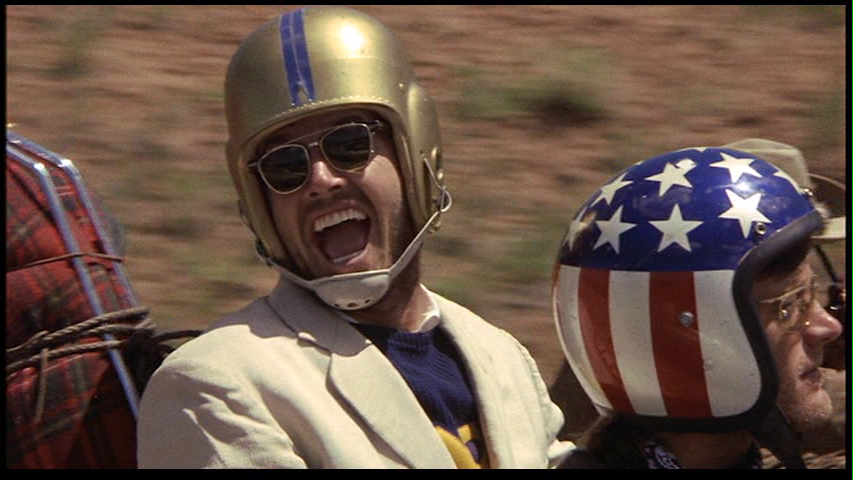
Every year around this time in August, aging lawyers, doctors, and those of similar professions, who have spent months growing their hair (what’s left of it), get on their motorcycles or load their motorcycles into custom-built trailers and head out to Sturgis, South Dakota for the annual bike rally. The hotels are jammed, as well as massive open-air tourist traps, like the Full Throttle Saloon—which burned down last year.

For a while I lived in Rapid City, located an easy drive from Sturgis, and rally week assured I wouldn’t get much sleep due to the noise of the crowds and motorcycles. One year, I tried to see a show by one of the few bands that weren’t rock dinosaurs. But I had to leave early because the women I were with were being sexually harassed.
Some women do ride, of course, but most are arm candy for the dudes, who act like they own the place (they’re lousy tippers, not surprisingly). Celebrities in the biker subculture also make an appearance, such as Peter Fonda. In 2011, he said he was training his grandchildren for armed sedition against Obama.
Now just another paranoid old white man, Fonda once starred in Easy Rider (1969), the film that stoked the outlaw biker fantasies reenacted at the Sturgis rally. Fonda, with Dennis Hopper, who directed and had the other leading role, brainstormed that a film about two friends who travel across the country after making a lucrative cocaine deal would be a hit. They shopped their idea to the studio that released Born Losers (1967), now a prime example of a Forgotbuster, and the prior biker film that Fonda starred in, The Wild Angels (1966), but were turned down because of the controversial subject matter of dealing hard drugs.
Friends of Jack Nicholson, at the time a B-list actor, agreed to take on the project. The stories about making Easy Rider are legendary. Hopper picked fights with everyone, including Fonda and Rip Torn, the actor who was to play George Hanson, a small-town alcoholic lawyer who joins up with Fonda and Hopper. As a result, Torn quit. With few options available, Hopper was persuaded to accept Nicholson as a replacement.
Not much happens in the first 45 minutes of Easy Rider. Some of the soundtrack is dated, in particular, “Born to Be Wild,” by Steppenwolf, a band that has become a staple of oldies radio and the rock nostalgia touring circuit. Other songs written by Carole King and Bob Dylan hold up far better. The comradery between Hopper and Fonda feels forced. There is sparse dialogue; Fonda, in particular, hides his inability to deliver convincingly more than one line of dialogue at a time behind a stone-cold hipster attitude.
The saving grace is the breathtaking cinematography of Lazlo Kovacs. Because the destination of the journey is Mardi Gras in New Orleans, there is a time factor—thus the riding is constant. There are luminous images of the sun setting over desert mountains and highways.
After an interminable visit at a hippie desert commune, they ride into town and promptly get thrown into jail. Hanson happens to be in the adjacent cell, sleeping off a wild night. Having done some work with the American Civil Liberties Union (ACLU), he gets them sprung. In return for his good deed, they ask him to come along.
Nicholson delivers a star-making performance that completely shifts the focus of the film. No longer about the characters played by Fonda and Hopper, it’s about Hanson’s fantasy of shedding his former identity and becoming a rebel. He doesn’t wear a motorcycle helmet and leather; he wears a football helmet and a college sweater (reminding us that, long ago, college was actually affordable for those not from the upper class).
 Hanson’s rebel fantasy kicks into high gear when he smokes pot for the first time. It’s a brilliantly offbeat scene, although hardly believable. Nicholson, a veteran drug user, had to smoke a heroic amount to approximate a first-time high, an experience that usually renders one incoherent, if not catatonic. In this imaginary world, Hanson gives a lengthy speech about UFOs and the perfect society, which resembles the typical doctrine preached by libertarians.
Hanson’s rebel fantasy kicks into high gear when he smokes pot for the first time. It’s a brilliantly offbeat scene, although hardly believable. Nicholson, a veteran drug user, had to smoke a heroic amount to approximate a first-time high, an experience that usually renders one incoherent, if not catatonic. In this imaginary world, Hanson gives a lengthy speech about UFOs and the perfect society, which resembles the typical doctrine preached by libertarians.
Next stop is a diner, where Hanson gets to be ogled by teenage girls and antagonize the local rednecks, who despise him and his friends’ very existence. Hanson goes out a martyr, killed by the same rednecks that night. His friends, who survive the attack, vow to pay their respects by going to the New Orleans cathouse to which he was planning to take them. Even in death, Hanson’s fantasy guides the action.
Whether at the commune or in the cathouse, the women serve the men, a sign of the film’s underlying conservatism—and a sign of the times that’s often overlooked in attempts to glamorize rebel lifestyles. The treatment of women in the film undercuts the final message: the two bikers die just like Hanson, at the hands of rednecks further on down the road, thus displaying the political factionalism that was destroying lives both in America and overseas, in places such as Vietnam.
Before his being murdered, Hanson says that “this used to be a helluva good country.” Such rhetoric has become the coin of the realm of old white men, who see their power slipping away. In response, they buy guns and try to live fantasies of being younger and sexually desirable.
They might, if they are wealthy, also buy expensive motorcycles and travel across the country, with perhaps their women in tow—and end up at Sturgis, where they can take comfort in and party with their own kind. Then they can return to their comfortable lives, after pretending they’ve been living the lives of the bikers in Easy Rider, but without having to experience their deaths.


